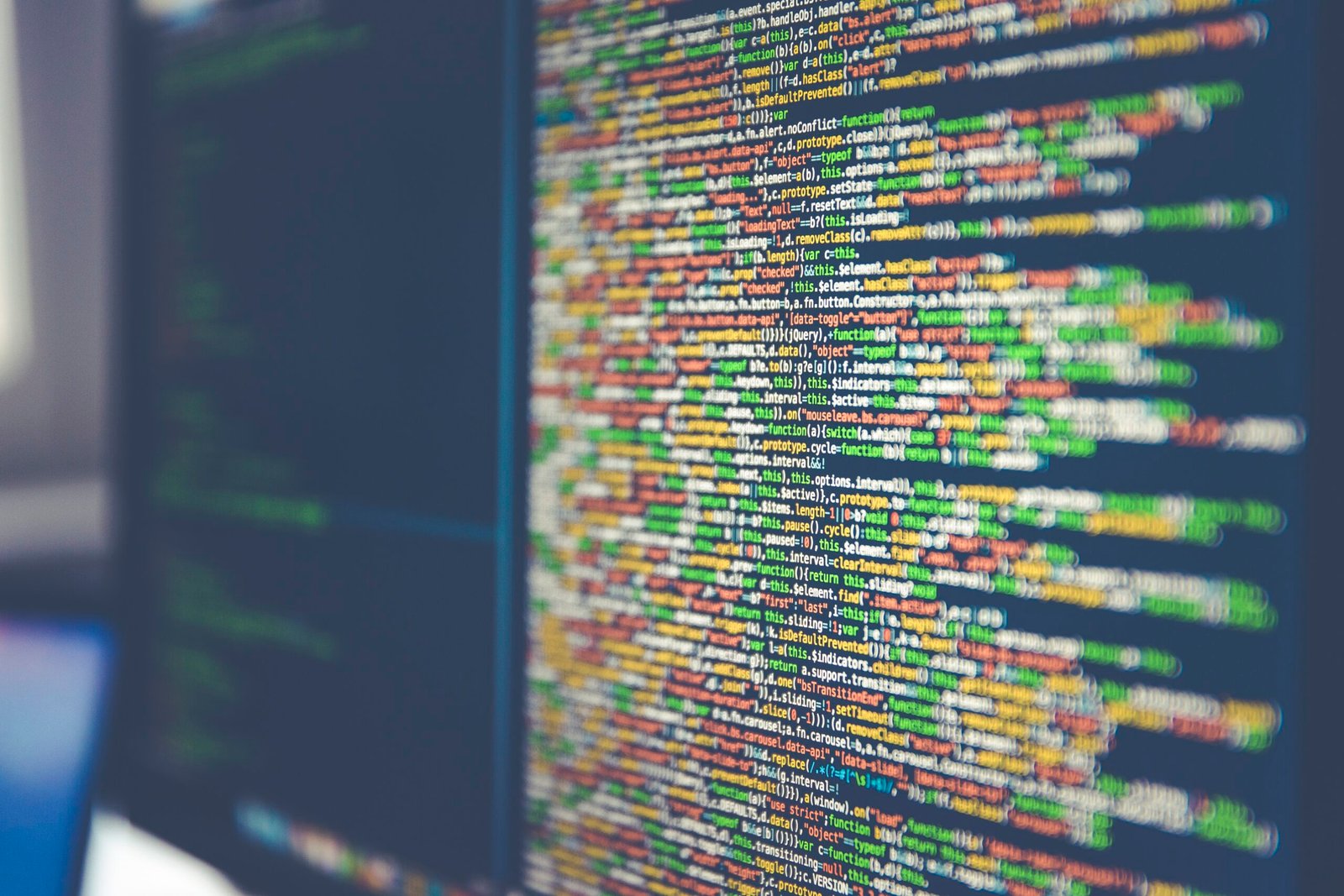In the evolving world of healthcare and technology, the question on everyone’s mind is: Can AI create new medicines? With the rapid advancements in artificial intelligence, researchers and scientists are exploring the potential of utilizing AI algorithms to revolutionize the process of drug discovery. By leveraging vast amounts of data and analyzing complex biological interactions, the possibilities seem endless. In this article, we will explore the exciting developments and challenges surrounding AI’s role in creating ground-breaking medicines.
Challenges in Drug Discovery
Traditional Drug Discovery Process
The traditional drug discovery process is a time-consuming and costly endeavor. It typically involves several stages, including target identification, lead compound identification, optimization, preclinical testing, and clinical trials. Each stage is complex and requires extensive resources, such as a large team of scientists, access to high-quality data, and expensive laboratory equipment.
Limitations of Traditional Methods
While traditional methods have been successful in discovering drugs, they also have limitations that hinder the drug discovery process. One major limitation is the reliance on trial and error. Identifying potential drug candidates often involves screening hundreds or thousands of compounds, which is a laborious and inefficient process. Additionally, traditional methods lack the ability to provide insights into complex biological systems and the interactions between drugs and their targets.
Role of AI in Overcoming Challenges
Artificial Intelligence (AI) has emerged as a powerful tool in drug discovery, offering solutions to overcome the challenges faced by traditional methods. AI can analyze vast amounts of data, identify patterns, and make predictions, providing valuable insights to researchers. By augmenting human intelligence with machine learning algorithms, AI can expedite the drug discovery process, reduce costs, and improve the probability of success.
Applications of AI in Drug Discovery
Drug Design and Optimization
AI plays a crucial role in drug design and optimization by utilizing its ability to generate and analyze large datasets. It can use this data to predict the properties and behaviors of potential drug candidates, facilitating the identification of promising compounds and optimizing their structures for increased efficacy and safety.
Virtual Screening
Virtual screening, facilitated by AI techniques, allows researchers to screen vast databases of chemical compounds to identify potential drug candidates. AI algorithms can efficiently evaluate the affinity of these compounds to a target protein and predict the likelihood of success in binding interactions, thereby streamlining the drug discovery process.
Target Identification
Target identification is a critical step in drug discovery. AI can assist in identifying potential drug targets by analyzing complex biological data, including genomics, proteomics, and molecular interactions. By uncovering novel targets with therapeutic potential, AI enables researchers to focus their efforts on developing drugs that effectively modulate these targets.
Prediction of Pharmacokinetics
Pharmacokinetics is the study of how drugs are absorbed, distributed, metabolized, and excreted within the body. AI can predict pharmacokinetic parameters, such as drug absorption and distribution, by analyzing the chemical and physicochemical properties of compounds. This enables researchers to design drugs with optimized pharmacokinetic profiles, leading to improved efficacy and safety.
Toxicity Prediction
AI can predict the potential toxicity of drug candidates, helping researchers identify compounds that may cause adverse effects. By analyzing data on chemical structures, biological properties, and toxicological endpoints, AI algorithms can provide early insights into the likelihood of toxicity, allowing researchers to eliminate risky candidates early in the drug development process.

This image is property of images.unsplash.com.
Benefits of AI in Drug Discovery
Acceleration of Drug Discovery Process
By automating various stages of the drug discovery process and leveraging AI’s ability to analyze vast datasets, AI significantly accelerates the drug discovery timeline. Researchers can efficiently and effectively identify potential drug candidates, optimize their properties, and select the most promising compounds for further development. This streamlined approach saves time and resources, expediting the delivery of new drugs to patients.
Cost Reduction
The high cost of drug discovery is a significant challenge in the pharmaceutical industry. AI offers cost-saving opportunities by reducing the need for manual labor, minimizing trial and error, and enabling more efficient use of resources. By optimizing the drug discovery process, AI helps minimize the financial burden associated with the development of new medicines.
Increased Probability of Success
AI algorithms can identify patterns and relationships within biological data that may not be immediately apparent to human researchers. This enhances the probability of finding successful drug candidates and increases the overall success rate of the drug discovery process. By leveraging AI’s capabilities, researchers can make better-informed decisions and focus their efforts on the most promising avenues of research.
Improved Target Identification
AI’s ability to analyze complex biological data unlocks the potential for discovering novel drug targets. By identifying these targets, researchers can develop drugs that address previously untreatable diseases or improve therapeutic strategies for existing conditions. AI aids in expanding our understanding of the molecular mechanisms underlying diseases, leading to the development of more effective treatments.
Enhanced Personalized Medicine
Personalized medicine aims to tailor medical treatments to individual patients based on their genetic makeup, lifestyle, and environmental factors. AI can analyze vast datasets, including genomics and clinical data, to identify potential biomarkers for patient stratification and develop treatments that are more precise and effective for specific patient populations. This personalized approach improves patient outcomes and reduces adverse effects.
Machine Learning in Drug Discovery
Types of Machine Learning Techniques
Machine learning techniques used in drug discovery can be broadly classified into supervised, unsupervised, and reinforcement learning. Supervised learning involves training a model using labeled data to make predictions or classifications. Unsupervised learning involves discovering patterns or structures within data without labeled information. Reinforcement learning uses trial and error to optimize a model’s performance by rewarding correct decisions and penalizing mistakes.
Deep Learning and Neural Networks
Deep learning is a subset of machine learning that utilizes artificial neural networks with multiple layers to analyze complex patterns and make predictions. Neural networks are particularly effective in tasks such as image and text analysis, which have applications in drug discovery, such as analyzing molecular structures or mining scientific literature for relevant information.
Predictive Modeling
Predictive modeling involves using historical data to create models that can make predictions about future outcomes. In drug discovery, predictive modeling can be used to identify potential drug candidates, predict their properties and activities, and optimize their structures for improved efficacy and safety.
Identifying Molecular Patterns
AI algorithms can analyze molecular patterns within chemical compounds, proteins, or genes to identify correlations with specific properties or biological activities. By uncovering molecular patterns, researchers can gain insights into the relationships between structure and function and design drugs with desired characteristics.
Data Mining and Analysis
Data mining and analysis utilize AI algorithms to extract valuable information from large datasets. By analyzing diverse sources of data, such as scientific literature, biological databases, and clinical trials, researchers can identify novel associations, discover hidden patterns, and make data-driven decisions in drug discovery.

This image is property of images.unsplash.com.
AI-assisted Drug Design
Structure-Based Drug Design
Structure-based drug design involves using the three-dimensional structure of a target protein to guide the design of potential drug candidates. AI algorithms can analyze protein structures, predict binding interactions, and generate virtual compounds that show high affinity for the target protein. This approach allows researchers to design drugs with optimal binding properties and enhance potency.
Ligand-Based Drug Design
Ligand-based drug design involves analyzing the structure and properties of a known ligand that binds to a target protein to design new compounds with similar characteristics. AI algorithms can compare and analyze the properties of known ligands to generate virtual compounds with desired properties, increasing the likelihood of successfully targeting the protein of interest.
De Novo Drug Design
De novo drug design involves generating completely novel compounds with desired properties using AI algorithms. By analyzing large datasets of chemical structures and properties, AI can generate virtual compounds that have not been previously synthesized. This approach offers the potential for discovering entirely new chemical entities with therapeutic potential.
Quantum Computing in Drug Design
Quantum computing holds promise in revolutionizing drug design by enabling complex calculations that are currently computationally infeasible. Quantum algorithms can simulate molecular interactions with high accuracy and speed, facilitating the design of drugs that precisely target disease-associated biomolecules. The integration of AI and quantum computing has the potential to accelerate drug discovery and improve its precision.
In Silico Protein Engineering
In silico protein engineering involves using computational methods to modify the sequence or structure of proteins to improve their stability, activity, or affinity to a ligand. AI algorithms can model protein structures, predict the impact of mutations, and guide the design of engineered proteins with enhanced properties. This approach opens avenues for developing more efficient enzymes, protein therapeutics, and diagnostics.
AI in Target Identification
Understanding Disease Mechanisms
AI can analyze vast amounts of data, including genomic, proteomic, and clinical data, to gain a deeper understanding of disease mechanisms. By uncovering the molecular underpinnings of diseases, AI can identify potential drug targets and guide the development of therapies that address the root causes of diseases.
Identifying Drug Targets
AI algorithms can sift through large datasets to identify potential drug targets by analyzing genetic data, biological pathways, and molecular interactions. This enables researchers to select targets that are both biologically relevant and druggable, increasing the chances of success in developing effective treatments.
Network Pharmacology
Network pharmacology is an interdisciplinary field that utilizes AI and network analysis to understand the complex interactions between drugs, targets, and diseases. By modeling these interactions, AI algorithms can identify novel drug-target associations, predict drug repurposing opportunities, and guide the development of combination therapies.
Multi-Target Drug Discovery
Many diseases are complex and involve multiple targets. AI can help identify combinations of drug targets that can be modulated simultaneously to achieve synergistic effects. By considering the interconnectedness of biological networks and the potential interactions between drug targets, AI facilitates the discovery of multi-target drugs with enhanced efficacy and reduced side effects.
Drug Repurposing
Drug repurposing involves identifying new uses for existing drugs. AI can analyze large databases of drug-target interactions, molecular profiles, and clinical outcomes to identify potential repurposing opportunities. By repurposing approved drugs for new indications, AI enables faster and more cost-effective development of treatments for various diseases.

This image is property of images.unsplash.com.
AI-assisted Screening Techniques
High-Throughput Screening (HTS)
High-throughput screening is a technique used to rapidly test a large number of chemical compounds for their activity against a specific target. AI can automate and analyze the data generated from HTS experiments, allowing researchers to efficiently screen vast libraries of compounds and identify hits that show potential for further development.
Virtual Screening and Docking
Virtual screening and docking involve using computer algorithms to predict the affinity and binding interactions between small molecules and target proteins. AI-based techniques can simulate the docking of virtual compounds to target proteins, predicting their binding affinity and identifying potential drug candidates. This approach accelerates the identification of lead compounds and reduces the need for labor-intensive experimental screening.
QSAR Modeling
Quantitative Structure-Activity Relationship (QSAR) modeling involves predicting the activity of compounds based on their chemical structures and properties. AI algorithms can analyze large datasets of chemical structures and activity data to develop QSAR models with predictive capability. These models help researchers prioritize compounds for further experimental testing, reducing costs and resources.
Fragment-Based Drug Design
Fragment-based drug design involves identifying small molecular fragments that bind to a target protein and subsequently growing them into larger compounds with improved potency. AI algorithms can analyze fragment libraries and predict the likelihood of success in fragment-based drug design. By guiding the selection and optimization of fragment hits, AI accelerates the drug discovery process.
Machine Learning Algorithms for Hit Selection
AI-based machine learning algorithms can analyze data on compound properties, biological activities, and molecular interactions to prioritize hit compounds with the highest probability of success. By integrating diverse sources of data and using advanced algorithms, AI enables researchers to make informed decisions on selecting the most promising compounds for further development.
AI and Pharmacokinetics
Drug Absorption, Distribution, Metabolism, and Excretion (ADME)
ADME refers to the processes of how drugs are absorbed, distributed throughout the body, metabolized, and eliminated. AI can predict ADME properties by analyzing chemical and physicochemical properties of drugs. This information helps researchers design drugs with optimal pharmacokinetic profiles, improving their efficacy and safety.
Prediction of Drug Bioavailability
Bioavailability is the measure of the proportion of a drug that reaches systemic circulation and is available to produce a therapeutic effect. AI algorithms can predict drug bioavailability by analyzing physicochemical properties, pharmacokinetic data, and transport mechanisms. This information assists in designing drugs with improved bioavailability and optimizing dosing regimens.
PK/PD Modeling
Pharmacokinetics-Pharmacodynamics (PK/PD) modeling involves quantifying the relationship between the concentration of a drug in the body (pharmacokinetics) and its pharmacological effect (pharmacodynamics). AI algorithms can integrate complex PK/PD data to develop accurate models that aid in optimizing dosing regimens and improving drug efficacy.
Optimizing Dosing Regimens
AI can optimize dosing regimens by analyzing pharmacokinetic, pharmacodynamic, and patient-specific data. By developing models that account for interindividual variability, AI algorithms can guide the design of personalized dosing strategies, ensuring optimal drug exposure and therapeutic outcomes.
Microbial Pharmacokinetics
AI can also be applied to microbial pharmacokinetics, which involves studying the behaviors of antimicrobial drugs within the body and their interactions with pathogens. By analyzing relevant data, such as drug concentrations, susceptibility profiles, and population dynamics, AI algorithms can provide insights into optimal dosing strategies and help combat antimicrobial resistance.
AI for Toxicity Prediction
Early Identification of Toxicity
AI algorithms can predict the potential toxicity of drug candidates by analyzing chemical structures, biological properties, and toxicological data. By identifying potential toxicological liabilities early in the drug discovery process, AI helps researchers eliminate compounds with safety concerns, saving time and resources.
Safety Assessment in Preclinical Studies
Preclinical safety assessment involves testing the effects of drug candidates on various biological systems before progressing to clinical trials. AI can analyze preclinical safety data, including in vitro and in vivo experiments, to predict the safety profile of compounds. This information aids researchers in selecting safer candidates for further development.
Cardiotoxicity Prediction
Cardiotoxicity, the potential for drugs to damage the heart, is a significant concern in drug development. AI algorithms can analyze diverse data sources, including cardiac electrophysiology, gene expression profiles, and adverse event reports, to predict the cardiotoxic potential of drug candidates. By accurately identifying compounds with potential cardiac side effects, AI helps reduce the risk to patient safety.
Hepatotoxicity Prediction
Hepatotoxicity, the potential for drugs to cause liver damage, is another critical consideration in drug development. AI algorithms can analyze data on chemical structures, biological properties, and liver-related endpoints to predict hepatotoxicity. This information enables researchers to screen out compounds with liver toxicity potential, ensuring the safety of drug candidates.
Neurotoxicity Assessment
AI algorithms can predict the neurotoxic potential of drug candidates by analyzing chemical structures, biological properties, and neurophysiological data. By identifying compounds that may cause adverse effects on the nervous system, AI assists in minimizing the risk to patient safety and avoiding delays in drug development.
Ethical Considerations and Future Outlook
Data Privacy and Security
The use of AI in drug discovery raises concerns about data privacy and security. To ensure the ethical use of AI, it is essential to establish robust protocols for data storage, access, and sharing. Safeguarding patient data and maintaining confidentiality are crucial to protect individual privacy.
Transparency and Explainability
AI algorithms can be complex and difficult to interpret. It is crucial to develop transparent and explainable AI models that can provide clear justifications for their predictions. This transparency enhances trust in AI systems and allows researchers to understand and validate the reasoning behind AI-generated insights.
Regulatory Challenges
The integration of AI into the drug discovery process poses regulatory challenges. Regulatory frameworks need to keep pace with rapidly evolving AI technologies to ensure the safety and efficacy of AI-assisted drug discovery approaches. Collaboration between regulatory bodies, pharmaceutical companies, and AI experts is essential in formulating appropriate guidelines.
Collaboration between AI and Human Experts
Successful utilization of AI in drug discovery requires collaboration between AI algorithms and human experts. AI can augment human intelligence, providing researchers with powerful tools for data analysis and decision-making. By combining the strengths of both AI and human experts, we can maximize the potential for new discoveries and advancements.
Potential Impact on Healthcare
The impact of AI in drug discovery extends beyond the development of new medicines. AI has the potential to revolutionize healthcare by enabling personalized medicine, accelerating diagnoses, and improving patient outcomes. By enhancing our understanding of diseases and their treatments, AI contributes to the transformation of healthcare delivery.
In conclusion, AI is a game-changing technology that addresses the challenges faced by traditional methods in drug discovery. From target identification to toxicity prediction, AI offers a range of powerful applications that accelerate the drug discovery process, reduce costs, and improve the probability of success. By leveraging the capabilities of AI, researchers can unlock new avenues for drug design, gain deeper insights into disease mechanisms, and ultimately deliver safer and more effective medicines to patients. As AI continues to advance, it holds tremendous potential to shape the future of drug discovery and healthcare as a whole.
